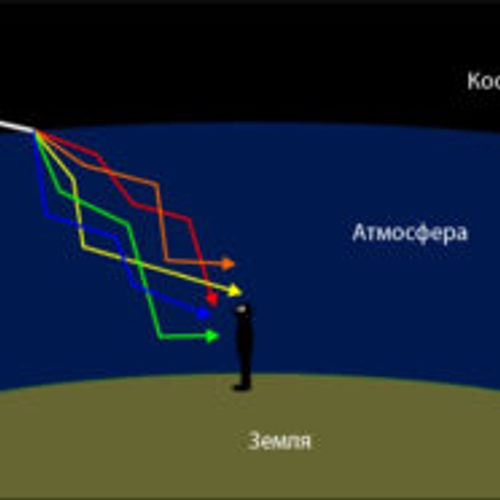| ID | #1677834629 |
| Added | Fri, 03/03/2023 |
| Author | July N. |
| Sources | |
| Phenomena | |
| Status | Result
|
| Resume |
Initial data
2 glowing balls next to each other were observed over the city of Stolberg (Germany) for two days in a row.
An eyewitness writes:
Last night at about the same time there were 2 balls next to each other, today 2 below each other. 1 is more than the other.
Original news
2 heele bollen, gister naast elkaar vandag onder elkaar
STOLBERG — Gister avond rond die tijd waren het 2 bollel naast elkaar, vandag 2 onder elkaar .1 its grooter dan die andere
Hypotheses
The heavenly bodies

The brightest heavenly bodies in the sky are Venus, Jupiter, and sometimes Mars and, of course, the Moon.
Venus is the bright yellow of the evening or morning star, shining in the sky on the background of evening or dawn. Maximum brightness of Venus can reach up to 4.3 m, and she is the third brightness of the sun in earth's sky after the sun and the moon. It so well reflects the light of the Sun that it is relatively easy to see and day, especially if you know the location. It manifests itself in the form of tiny blinking white dots.
Events
Rocket launches (from space.skyrocket.de)
- Site: () Vehicle: Falcon-9 v1.2 (Block 5) Payload: Starlink v1.5 G5-3-1 (Starlink 5699) Starlink v1.5 G5-3-2 (Starlink 5686) Starlink v1.5 G5-3-3 (Starlink 5656) Starlink v1.5 G5-3-4 (Starlink 5683) Starlink v1.5 G5-3-5 (Starlink 5684) Starlink v1.5 G5-3-6 (Starlink 5636) Starlink v1.5 G5-3-7 (Starlink 5680) Starlink v1.5 G5-3-8 (Starlink 5058) Starlink v1.5 G5-3-9 (Starlink 5682) Starlink v1.5 G5-3-10 (Starlink 5020) Starlink v1.5 G5-3-11 (Starlink 5669) Starlink v1.5 G5-3-12 (Starlink 5678) Starlink v1.5 G5-3-13 (Starlink 5646) Starlink v1.5 G5-3-14 (Starlink 5673) Starlink v1.5 G5-3-15 (Starlink 5677) Starlink v1.5 G5-3-16 (Starlink 5676) Starlink v1.5 G5-3-17 (Starlink 5674) Starlink v1.5 G5-3-18 (Starlink 5628) Starlink v1.5 G5-3-19 (Starlink 5679) Starlink v1.5 G5-3-20 (Starlink 5672) Starlink v1.5 G5-3-21 (Starlink 5681) Starlink v1.5 G5-3-22 (Starlink 5708) Starlink v1.5 G5-3-23 (Starlink 5711) Starlink v1.5 G5-3-24 (Starlink 5705) Starlink v1.5 G5-3-25 (Starlink 5687) Starlink v1.5 G5-3-26 (Starlink 5689) Starlink v1.5 G5-3-27 (Starlink 5650) Starlink v1.5 G5-3-28 (Starlink 5596) Starlink v1.5 G5-3-29 (Starlink 5685) Starlink v1.5 G5-3-30 (Starlink 5691) Starlink v1.5 G5-3-31 (Starlink 5688) Starlink v1.5 G5-3-32 (Starlink 5690) Starlink v1.5 G5-3-33 (Starlink 5694) Starlink v1.5 G5-3-34 (Starlink 5693) Starlink v1.5 G5-3-35 (Starlink 5692) Starlink v1.5 G5-3-36 (Starlink 5696) Starlink v1.5 G5-3-37 (Starlink 5695) Starlink v1.5 G5-3-38 (Starlink 5704) Starlink v1.5 G5-3-39 (Starlink 5701) Starlink v1.5 G5-3-40 (Starlink 5706) Starlink v1.5 G5-3-41 (Starlink 5371) Starlink v1.5 G5-3-42 (Starlink 5373) Starlink v1.5 G5-3-43 (Starlink 5364) Starlink v1.5 G5-3-44 (Starlink 5013) Starlink v1.5 G5-3-45 (Starlink 5362) Starlink v1.5 G5-3-46 (Starlink 5344) Starlink v1.5 G5-3-47 (Starlink 5100) Starlink v1.5 G5-3-48 (Starlink 5139) Starlink v1.5 G5-3-49 (Starlink 5363) Starlink v1.5 G5-3-50 (Starlink 5365) Starlink v1.5 G5-3-51 (Starlink 5366) Starlink v1.5 G5-3-52 (Starlink 5141) Starlink v1.5 G5-3-53 (Starlink 5367) Starlink v1.5 G5-3-1, ..., G5-3-53
Investigation
Most likely, it is Jupiter and Venus.
News: See the rare planetary conjunction of Jupiter and Venus

Two nights in a row – on March 1 and 2 – it will be possible to observe a “kiss” in the sky Jupiter and Venus. This phenomenon is so called because the two planets of the Solar System will visually appear very close to each other.
This planetary connection is, of course, a trick of the eye. In fact, the two bright planets will be millions of kilometers apart from each other. But if you look at them from the Ground, they will seem almost touching. This happens about once a year.
Resume
The heavenly bodies

The brightest heavenly bodies in the sky are Venus, Jupiter, and sometimes Mars and, of course, the Moon.
Venus is the bright yellow of the evening or morning star, shining in the sky on the background of evening or dawn. Maximum brightness of Venus can reach up to 4.3 m, and she is the third brightness of the sun in earth's sky after the sun and the moon. It so well reflects the light of the Sun that it is relatively easy to see and day, especially if you know the location. It manifests itself in the form of tiny blinking white dots.
Similar facts
Log in or register to post comments



